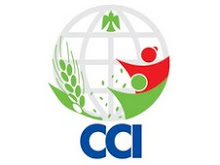 |
| In this article, Vatican II: 50 years later, the late Father Jose Comblin reflects on the Council. |
Vatican II responded to questions and challenges of western society in 1962. The issues addressed, the proposed answers, discussions on church structures, ideas about liturgical reform, had all been prepared by theologians and pastoralists, especially since the 30s in the Central European countries -- France, Germany, Belgium, Holland, Switzerland, and the fringes of northern Italy. European society, destroyed by war, was rebuilt and the church occupied a prominent place in society. It was the government in Germany, Italy, Belgium, Holland and it had an interest in the government of France. In fact, it had lost touch with the working class, but the latter was already declining numerically because of the evolution of the economy towards services. The number of practicing Catholics was declining, but not so as to attract attention. The church had a faithful clergy, sufficiently enlightened bishops, although not very social reformist, but identified with the Christian Democrat parties. The great problem of the Church was the tension between the sectors most committed to the new society and the Roman world of Pius XII, supported by the Churches of the least developed and most traditional countries such as Spain, Portugal, Latin America, Italy -- especially south of Florence, and the Catholic peoples of Southeast Europe. The problems were structural and neither dogma nor traditional morality was enough.
In 1968, a total revolution began abruptly that affected all dogmas and all traditional morality as well as all the institutional structures of the Church and society as a whole. In 1968, Vatican II would have been impossible because there would have been no one or hardly anyone to understand what was happening. Vatican II responded to the problems of 1962, but had nothing to respond to the challenges of 1968. In 1968, the Council would have been a conservative Council frightened by the radical cultural transformations that were beginning.
- Jose Comblin (Translated by Rebel Girl)
FULL ARTICLE
Vatican II: Fifty years later (Iglesia Descalza)












0 comments:
Post a Comment